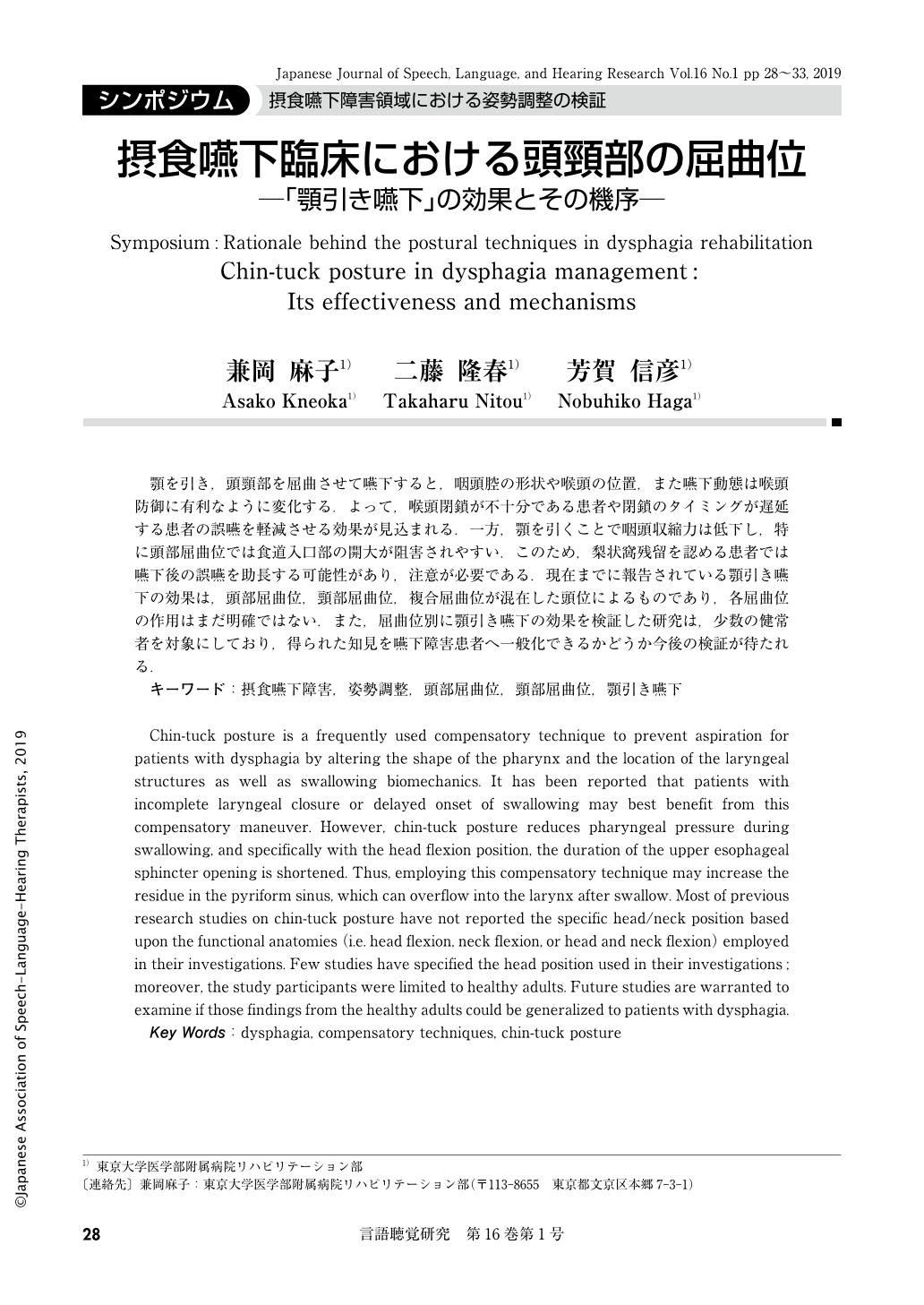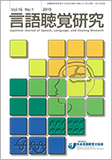Japanese
English
- 有料閲覧
- Abstract 文献概要
- 1ページ目 Look Inside
- 参考文献 Reference
- サイト内被引用 Cited by
顎を引き,頭頸部を屈曲させて嚥下すると,咽頭腔の形状や喉頭の位置,また嚥下動態は喉頭防御に有利なように変化する.よって,喉頭閉鎖が不十分である患者や閉鎖のタイミングが遅延する患者の誤嚥を軽減させる効果が見込まれる.一方,顎を引くことで咽頭収縮力は低下し,特に頭部屈曲位では食道入口部の開大が阻害されやすい.このため,梨状窩残留を認める患者では嚥下後の誤嚥を助長する可能性があり,注意が必要である.現在までに報告されている顎引き嚥下の効果は,頭部屈曲位,頸部屈曲位,複合屈曲位が混在した頭位によるものであり,各屈曲位の作用はまだ明確ではない.また,屈曲位別に顎引き嚥下の効果を検証した研究は,少数の健常者を対象にしており,得られた知見を嚥下障害患者へ一般化できるかどうか今後の検証が待たれる.
Chin-tuck posture is a frequently used compensatory technique to prevent aspiration for patients with dysphagia by altering the shape of the pharynx and the location of the laryngeal structures as well as swallowing biomechanics. It has been reported that patients with incomplete laryngeal closure or delayed onset of swallowing may best benefit from this compensatory maneuver. However, chin-tuck posture reduces pharyngeal pressure during swallowing, and specifically with the head flexion position, the duration of the upper esophageal sphincter opening is shortened. Thus, employing this compensatory technique may increase the residue in the pyriform sinus, which can overflow into the larynx after swallow. Most of previous research studies on chin-tuck posture have not reported the specific head/neck position based upon the functional anatomies (i.e. head flexion, neck flexion, or head and neck flexion) employed in their investigations. Few studies have specified the head position used in their investigations; moreover, the study participants were limited to healthy adults. Future studies are warranted to examine if those findings from the healthy adults could be generalized to patients with dysphagia.

Copyright © 2019, Japanese Association of Speech-Language-Hearing Therapists. All rights reserved.


